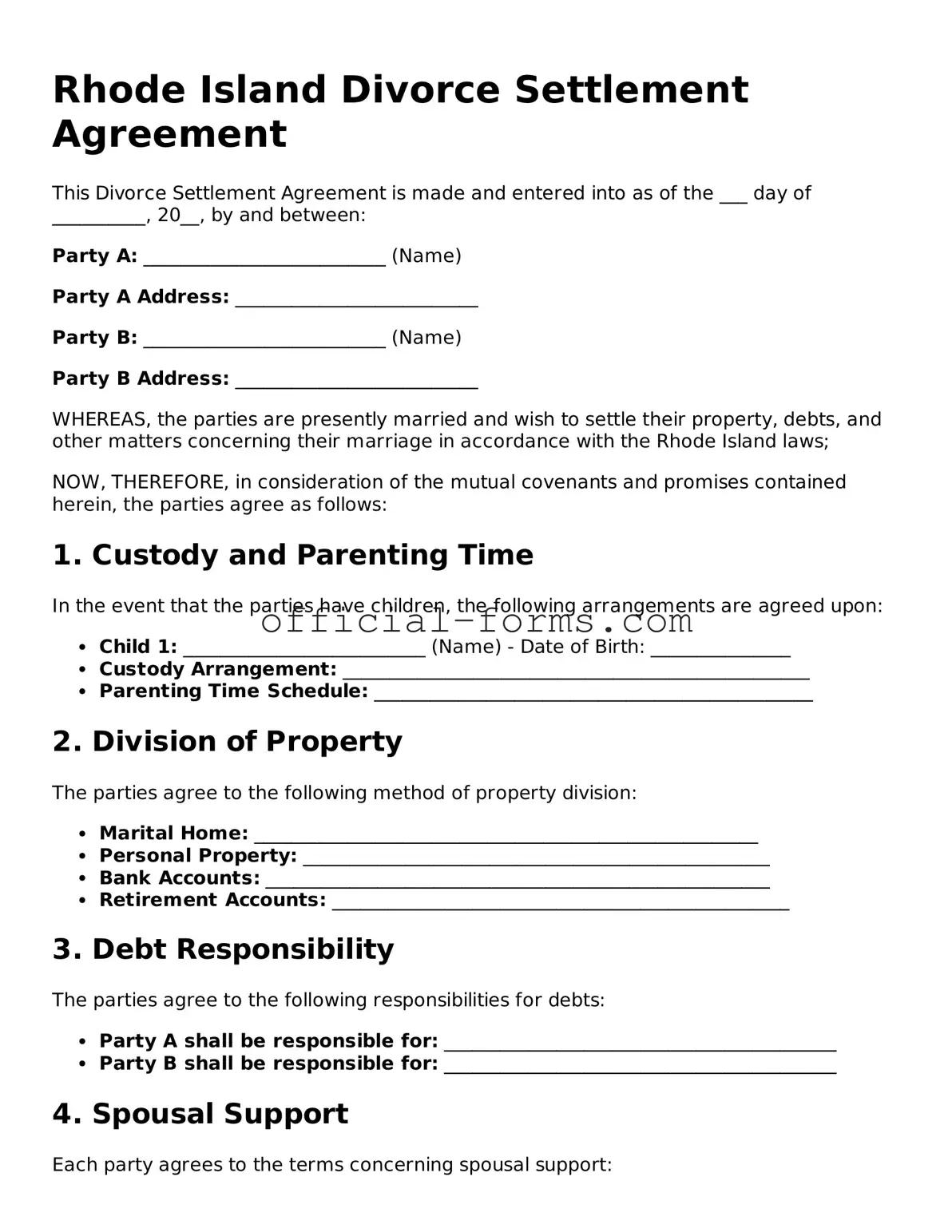Filling out the Rhode Island Divorce Settlement Agreement form can be a daunting task. Many people make common mistakes that can complicate the divorce process. Understanding these pitfalls can help ensure a smoother experience.
One frequent mistake is failing to provide complete and accurate information. Each section of the form must be filled out thoroughly. Omissions can lead to delays or even the rejection of the agreement. It’s crucial to double-check all entries, especially regarding financial information.
Another common error is neglecting to consider future changes in circumstances. For instance, individuals may not account for potential changes in income or living situations. This oversight can create conflicts later on. It’s wise to include provisions that allow for adjustments as needed.
Many people also overlook the importance of clarity in language. Using vague terms can lead to misunderstandings. Clear and precise language helps both parties understand their rights and obligations. Ambiguities can result in disputes down the line.
Additionally, some individuals fail to seek legal advice before submitting the form. While it may seem straightforward, legal nuances can significantly impact the agreement. Consulting with a lawyer can provide valuable insights and help avoid costly mistakes.
Another mistake involves not addressing all relevant issues. The form covers various aspects, such as property division and child custody. Failing to address each issue can leave important matters unresolved. It’s essential to ensure that every aspect of the divorce is covered in the agreement.
Finally, people often forget to keep copies of the completed form. Having a record is vital for future reference. Without copies, individuals may struggle to recall what was agreed upon. Always retain a copy for personal records.
